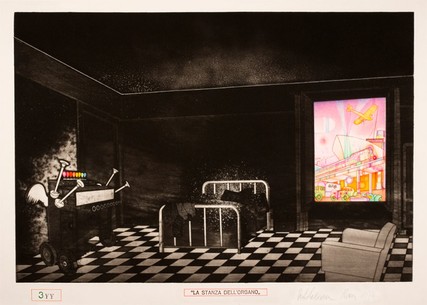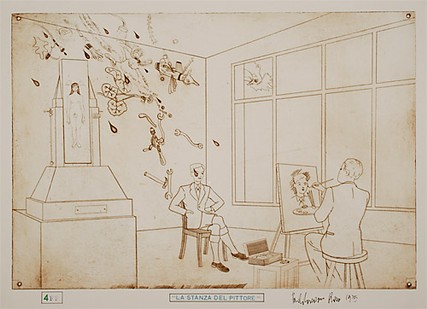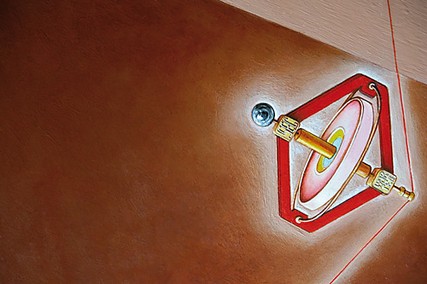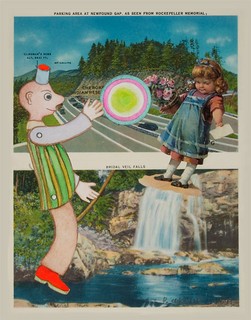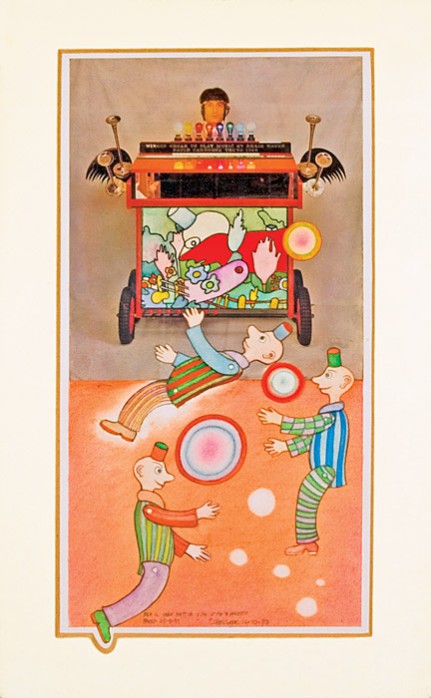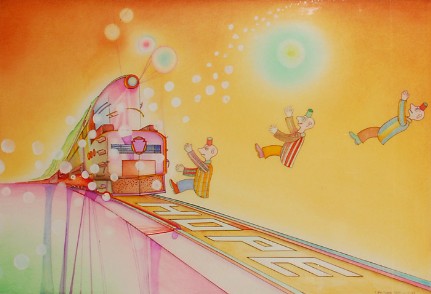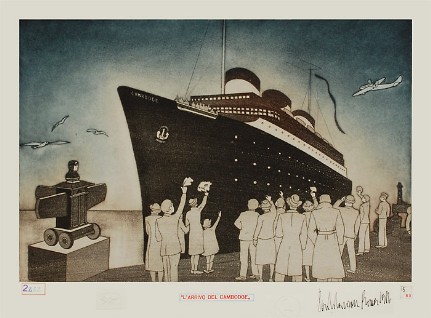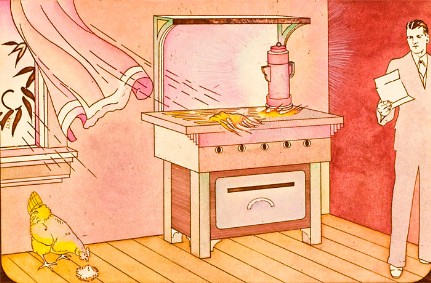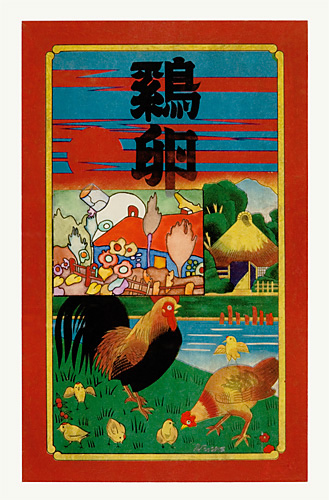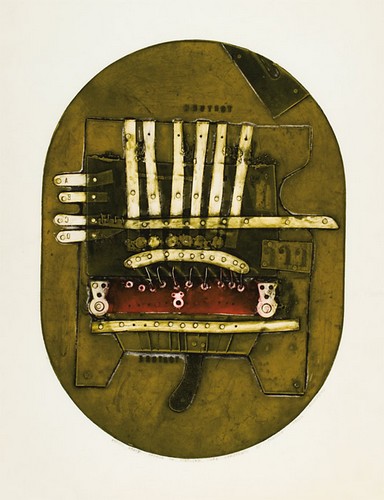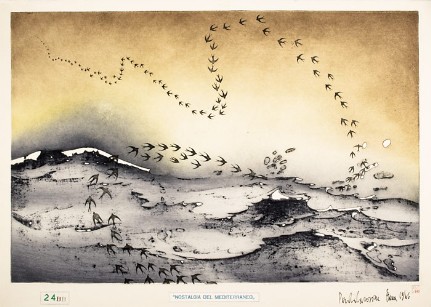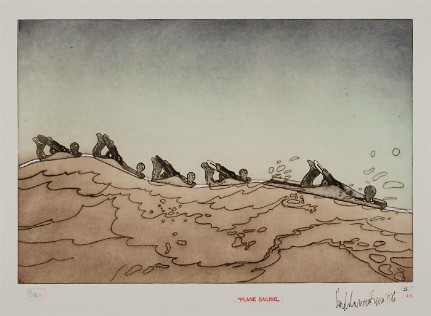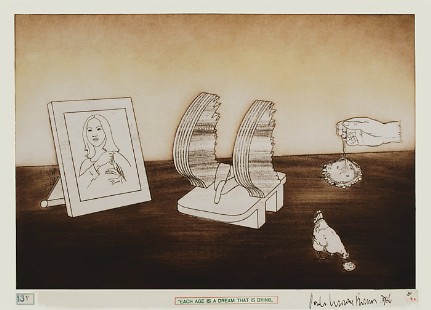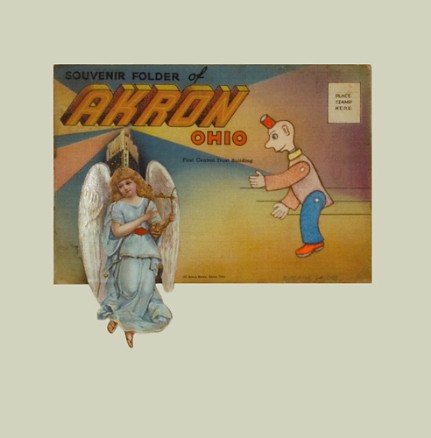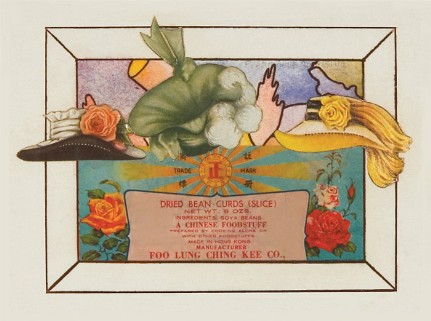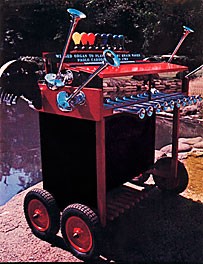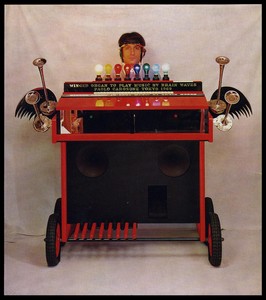Paolo Carosone
Main menu:
Biography
ARTIST

1941
Paolo Livio Loris Carosone was born in Rome on 8 January. His father is an engineer with a passion for electronics.
1946
The Art Nouveau neighbourhood by architect Coppedè he lives close by makes an everlasting impression on the young boy because of its uninhibited imagination and eclecticism.
1950
Attending a performance where magician Bustelli levitates a woman in Chinese clothes, he starts working on his own magic shows. He plans to become a professional conjuror and performs at private homes, schools, parish halls for four years.
1955
First exhibition of watercolour paintings at the "Il Calderone" Gallery in Rome.
1956
Some of his pieces are sold at the Gallery "L'88" in Rome.
1958
In Rome the "Discothèque" Gallery exhibits several pieces, one of which is a bas-relief.
1959
He graduates from his local high school, G. Mameli, in Rome.
1961
He becomes a student at the University of Architecture there, then leaves for Amsterdam where he studies drawing and sculpture at the Instituut voor Kunstnijverheidsonderwijs.
To pay for his studies, he makes plaster statues in a workshop producing religious articles, then becomes a guide at the International Flower Market in Alsmeer where he becomes deeply interested in botany.
1962
He moves to Copenhagen to study etching with Professor Holger Jensen at the Royal Academy of Fine Arts, where he remains until 1966.
The Gammel Strand Gallery in Copenhagen organises the first major exhibition of his work.
The Gallery Leger in Malmö organises several exhibitions and becomes the representative for his wok in Scandinavia.
1963
He gets a scholarship from the Danish Government to continue his research on etching techniques. He travels across Sweden, Finland, the Soviet Union, Yugoslavia, Greece, Turkey, Egypt.
1964
He is awarded a scolarship for a second year
The American Art Gallery in Copenhagen represents his works worldwide. His etchings and watercolours are exhibited at the Galerie 20 in Arnhem, Holland.
1965
He starts living in New York, where the Museum of Modern Art buys a number of his etchings.
The Philadelphia Museum of Art as well as public and private collectors buy many more of his works.
1966
In Italy, he has the first major exhibition for his graphic work at the Calcografia Nazionale in Rome, then headed by Maurizio Calvesi and in Messina, the Bookshop - Gallery Il Fondaco - a meeting place for Sicilian poets and scholars - organises an exhibition of his etchings together with the University there.
He leaves Europe from Marseilles on board the Cambodge. He visits Egypt, Aden, India, Ceylon, the Philippines, Singapore, Thailand, Hong Kong, and Japan where he is to remain until 1970.
1967
He studies Ukiyoe, the ancient Japanese art of woodblock, at the Tokyo Geidai under Professor T. Ono.
The Professor introduces him to the workshops of traditional Japanese craftsmen : engravers and printers of the Ukiyoe, masters in the craft of lacquer, Nihonga painters, calligraphy masters and Katana (the Japanese sword) craftsmen.
Dan Kazuo also introduces him to the Japanese literary circle - close to Politaia - a journal for poets and writers. Up until 1970 he contributes by his writings and drawings.
He is a guest at the Biennale des Jeunes in Paris.
He travels across Korea for over a month.
1968
He becomes friends with Japanese artists Ikeda Masuo and Munakata Shiro. With the support of the Minami Gallery in Tokyo and the help of four computer scientists, he designs and constructs Winged Organ to play music by brain waves, a highly sophisticated audio-kinetic sculpture turning the waves of the human brain, the beating of the heart, the breathing, body temperature and blood pressure into electronic music.
For the Japanese publishing company Kodansha, he illustrates Henry Miller's Tropic of Capricorn.
1960
The Minami Gallery organises his first exhibition in Japan where Winged Organ to play music by brain waves can be seen along with many other works such as : Musical Pendulum, a musical pendulum operated by remote control, Musical Barometer, a barometer which turns the continuous change in temperature into sound, The Winking Man, an optical-kinetic sculpture, and sculptures in Japanese lacquer among which Monument to the Kamikaze, Winged Ghetas, Rocking Spaceship and Revolving Anatomy.
Movies director Teshigahara Hiroshi buys Light organ, one of the audio-kinetic sculpture from the exhibition.
Shimizu Kusuo, who owns the Gallery introduces him to composer Takemitsu Toru, who devotes a whole chapter of his book Oto, chinmoku to hakari aeru hodoni to him.
He spends two months travelling across Thailand, Singapore, Indonesia, Vietnam, Hong Kong, studying music and ceremonial dances and starts a collection of traditional musical instruments.
1970
He leaves Japan for Los Angeles on the cargo ship Rose. He is the only passenger on board, travelling with his numerous sculptures and projects.
In Santa Monica, he stays with the painter Sam Francis, who introduces him to the artistic scene in Los Angeles.
He turns a former pet shop near Santa Monica Beach into his laboratory-workshop.
He works on a series of kinetic sculptures inspired by 1930s California architecture, Monuments to the Automata.
He works for two months on making a multi-screen film called Do not polish the brass, which makes the origin and inspiration for the pictures obvious.
1971
He returns to Italy to work on an assignment for Luciano Berio - whom he met in Japan through Takemitzu Toru. The project revolves around the idea of creating music through the dancers' movements ; each movement is radio-transmitted by transducers fastened to their bodies while a receiver changes it into electronic music.
At his former school T. Tasso, he gives a lecture on the link between Art and Technology with a screening of his film.
In the second half of the year, he works on a series of etchings inspired by old medical images.
These etchings are then exhibited at the Gallery Grafi?ki kolektiv in Belgrade as part of a program by the Italian Cultural Institute.
In Belgrade, he gives a lecture called Man, a parasite in the universe at the Dom Omladine.
Numerous screenings of Do not polish the brass.
He travels across Yugoslavia, Bulgaria, Greece, Turkey, Syria et Lebanon. At the Maison de l'Art in Beyrouth his film and etchings are shown at an exhibition.
1972
He returns to Los Angeles where an exhibition dedicated to his work at the Esther-Robles Gallery is greatly successful.
This time, Winged Organ to play music by brain waves is connected to an aquarium through special sensors which turn the movements of the fish into music.
Another exhibition is dedicated to the series "Monuments to the Automata".
He gives a series of lectures at the Los Angeles County Museum, the Pasadena Museum of Art, the Otis Art Institute and the San Francisco Museum of Art called "The heterogeneous composition of my poetic world".
Back in Europe, he works in Rome for four months on a new series of etchings called Love Wounds - neo-classical figures covered with gauze and bandages.
Back in California, he teaches engraving at Berkeley University.
1973
He is given a teaching assignment for another year in Berkeley. There, he can use the various laboratories of the science departments and do experiments on the flow of sands and coloured crystals through tubes filled with rare gasses.
His work is selected for the San Francisco Museum of Art World Print Competition 73.
For a limited edition by the Allen Press of San Francisco, he illustrates a short story by Luigi Pirandello.
1974
He goes to Canada for an exhibition of his work at the Allen Gallery in Vancouver.
Back in Rome, he starts on a series of etchings called Engraved Images, a play on the word engraved - engraved on paper, or in one's memory. The series is conceived of as a voyage in the chambers of nostalgia.
1975
He gives a series of lectures on Engraved images in museums throughout the US and Canada.
1976
In Rome he does the last pieces for the series Engraved images.
He gives Milan's Galleria del Naviglio exclusive rights for his works in Italy
Back in the United States, he begins a new series of sculptures in epoxy resin. They are called Herobotics - a portmanteau word combining hero and robotics.
1978
It takes him eight months to complete La Gloria, a sculpture made with composite materials, commissioned by a private collector.
He creates a first series of sculpture-jewels.
1979
In Rome he concentrates on Herobotics Heads in epoxy resin. He produces the first series of computer-generated images, which he then makes into sculptures through a process of chemical milling.
1980
In Temple Gallery in Rome he exhibits the futuristic reconstruction (on a 1 to 16 scale) of the obelisk on Piazza del Popolo re-arranged in neoclassical style by the architect Giuseppe Valadier. The piece is produced by introducing computer-made sculpture elements.
Increasingly interested in transcription systems for the languages of the world, he achieves a series of Technological Hieroglyphics in epoxy resin formerly redesigned on computer.
He becomes a Visiting Lecturer, and then an Assistant Professor at the Temple University Tyler School of Arts where he teaches sculpture until 1988.
1981
He creates his Museum of Un-natural History, a series of boxes containing insects and other Mechanical Animals.
At the Lerici Foundation in Stockholm he inaugurates Visionary Plastics - a travelling exhibition through major European cities.
1982
From a gift by a taxidermist friend - a vertebra from a whale - he starts a collection of Animal Osteology.
As Visionary Plastics is exhibited at the Hamburg-House EimsBüttel - sponsored by the Italian Cultural Center - he is invited by the Schering Gmbh to experiment galvanization techniques on epoxy resin sculptures in Berlin.
The Schering then commissions him to do a sculpture for their Bergkamen headquarters.
1983
His sculptures are exhibited in the Haerder City Center in Wolfsburg Germania in the Italienische Woche.
He returns to Rome definitely.
1984
Starting from language studies, he seeks to achieve a universal system of transcription of the sounds emitted by the phonatory system.
The director of the Zoological Museum in Rome puts rooms in the department of taxidermy at his disposal and at the disposal of his students. Being able to access the pieces there is a major source of inspiration which will result in many drawings, photographs, models, plaster casts of animals and bone structures, which will lead to the Museum of Un-natural History.
1985
He is awarded a Fullbright Grant and goes to Philadelphia to give a series of lectures.
A painter friend of his from Temple University, Charles Schmidt, suggests he contacts the head of the NASA Fine Art Program, Robert Schulman. He goes to Washington DC with photographs of his sculptures and projects. Schulman encourages him to take part in the Program asking him to explain the launching of the space shuttle Challenger at the Kennedy Space Center in Cape Canaveral through his work.
1986
At the Kennedy Space Center in Cape Canaveral, he draws the details of the launching platform for the space shuttle Challenger.
1987
For the NASA Art Museum he builds a 6-meter high obelisk in epoxy resin to commemorate Challenger.
The names of the seven astronauts who lost their lives in the disaster are written on the obelisk, using not the letters of the alphabet but a hieroglyphic code of universal transcription of the sounds which he worked out together with the Director of the Institute for Cognitive Sciences in Rome's CNR, Francesco Antinucci.
1988
Using old painting techniques he does a series of portraits and still-life, with clocks, lanterns, arrows, darts, trumpets, lutes, violins, mirrors, skulls and plaster casts of classical sculptures.
Second series of sculpture-jewels.
1989
He designs a sculpture - commissioned by Aeritalia - which changes position according to the sun.
1990
He continues experimenting on the chemical photo-cutting making sculptures and bas-reliefs out of stainless steel, phosphorous bronze, aluminium and brass.
1991
He is commissioned to do several bronze portraits.
He does several aluminium fusions for small models of monuments inspired by science-fiction.
1992
He builds a model for a stainless steel laser-induced obelisk.
1993
In Venice he begins illustration for Dante's Divine Comedy with a series of drawings and watercolours inspired by episodes from Hell.
1994
In Velletri - where one of his collectors has invited him - he works for a few months on a series of watercolours and collages devoted to the Fortunello character.
1995
Third series of sculpture-jewels.
He continues the drawing and watercolour illustrations for Divine Comedy doing episodes from Purgatory.
1996
He models portraits of friends and commissioners, made in bronze and epoxy resin.
1997
He has plans for a fountain with a basin from which sculptures emerge, reacting to the presence of visitors.
1998
He makes the Mechanical Animals from the Museum of Un-natural History in precious metal.
Using the traditional technique of the Flemish Masters, he paints still-life with auto-biographical elements and a dreamlike atmosphere.
1999
Increasingly interested in the possible use of industrial production techniques such as that of Rapid Prototyping, he does a series of models for sound sculptures.
2000
He continues with the Mausoleum Sculptures on the Autocad software program.
2001
He devotes more and more time to computer drawing, and completes the series entitled Metamorphosis of Mechanical Animals.
2002
Sponsored by a Japanese firm he produces 5 sculptures using Laser metal cutting technique
2003
For Galleria Borghese in Rome he models a synaesthetic bas-relief, a 3D reproduction of the Raphael's painting "The lady with the unicorn"
2004
He does a series a small busts which mix Greek mythology and science-fiction.
2005
For the Soprintendenza de Pompei he designs and makes the second tactile synaesthetic model - a three dimension version of a fresco from the Casa de Vettii in Pompei, The child Hercules strangling snakes.
2006
He illustrates the fables of Leonardo da Vinci for the Italian publishing company Catamarano with drawings performed with the Autocad software program - as if to testify for the extreme modernity of the great Leonardo's classic fables.
2007
He works on the Robotic Myths sculptures - they are idealised portraits from the ancient classics to which are added robotic elements.
2008
Completion of the series Mechanical Animals and beginning of a new series : Zoomorphic Automobiles Planes and Helicopters.
2009
He starts a cycle of "Mechanical Sculptures" inspired to the marine world. The subjects are mostly crabs, crawfishes, rays and shells and also sea birds. He also makes some molds of a large "Limulus Poliphemus" (an Arthropod from the Lower Triassic) which are then transformed into helmets, ships and war machines.
2010
He starts to paint a series of zoological and botanical plates, originated from a fusion of the vegetal and the animal world, continuing the project started in 1980 of a "Museum of Unnatural History". Many of these images are translated in sculptural models manually or by the process of "rapid prototyping" used in industry.
